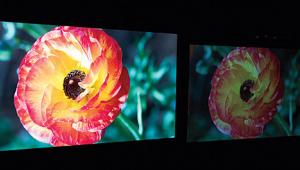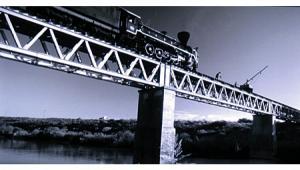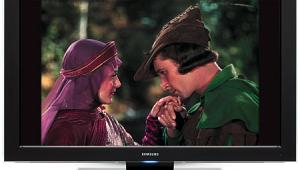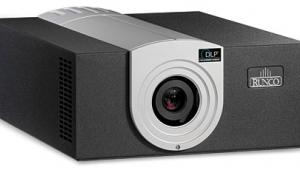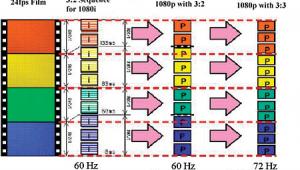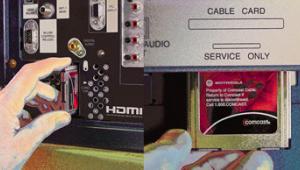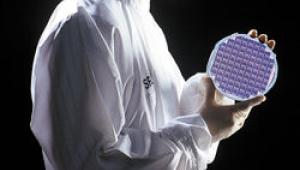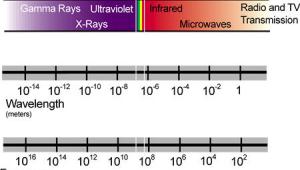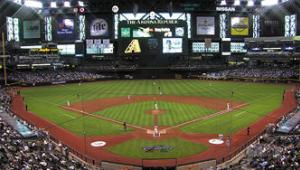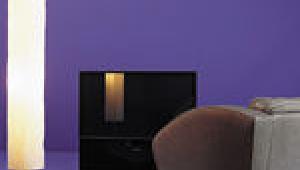LCD and DLP Explained: What Goes on Here? Page 3
Another manufacturer of LCoS—who recently acquired the trademark for the initialism "LCOS"—is Three-Five Systems of Tempe, Arizona. At one time, IBM Japan, DisplayTech, Colorado Micro Display, Chisholm, and others were manufacturing limited quantities of LCoS chips or trying to produce variations on LCoS, including ferroelectric and homeotropic LCDs. Most of these companies eventually gave up on LCoS or went out of business altogether.
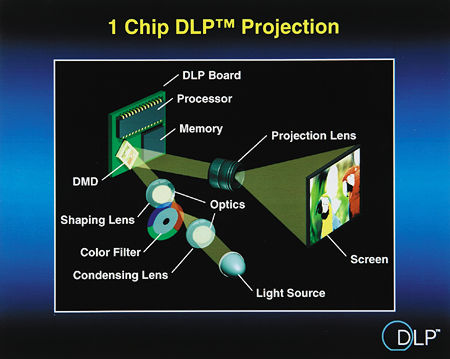
The levels of gray are produced by the Digital Micromirror Device (DMD), comprised of thousands of tiny mirrors. In a single-chip projector, the color is produced by a rotating color wheel, timed to coincide with the mirrors and, by relying on the eye's persistence of vision, producing a full color image. Illustration courtesy of Texas Instruments.
The problem is that LCoS devices are manufactured on wafers, and the yields from those wafers are quite low at present. It's hard to maintain the thin walls and high resolutions that HD LCoS panels require and still make enough of them to sustain high-volume sales of consumer rear-projection TV sets. CRTs are far easier and less expensive to manufacture for RPTVs, which is why plenty of tube sets still come to market each year.
RCA's Scenium L5000 RPTV was to use 1280x720 LCoS panels from Three-Five Systems. At present, yields have been insufficient to roll out more than a thousand or so of these sets, and the competitiveness of its initial MSRP of $7000 has been threatened by the rapid drop in price of both plasma display panels (with a street price of about $8000 for a 50-inch panel) and new, lower-priced sets from Samsung and others that use Digital Light Processing (DLP) imaging.
DLP: Nowadays, it's hard to find anyone who hasn't at least seen or heard the initials "DLP." Texas Instruments first developed this technology in the 1980s as a way to transfer images inside laser printers, and the company has gone on to become a strong player in the front-projection, RPTV, and electronic-cinema markets. Several feature films have been screened digitally using DLP Cinema chassis, most notably last summer's Star Wars—Episode II: Attack of the Clones.
At first glance, a digital micromirror device (DMD), the foundation of DLP imaging, doesn't look much different from an LCoS panel—just larger. Both are reflective light shutters on IC chips, and, in larger projectors, both use polarized beam splitters to produce full-color images.
If you look at a DMD under an electron microscope, you see many thousands of tiny mirrors, each mounted on a pedestal. All these mirrors do is tilt back and forth 10–12° in response to On and Off commands sent to them by the DMD's controller. In the normal, On position, light is reflected toward the imaging surface. In the Off position, light is directed away from the surface (and, in high-brightness projectors, into a heat-absorbing light dump).
This doesn't seem like a very useful way to make electronic images—until you speed up the On/Off cycles. By using pulse-width modulation, defined as the ratio of On cycles to Off cycles in a specified time interval, our good ol' persistence of vision kicks in and we see a precise level of gray on the screen. Change the ratio to include more Ons than Offs and the image becomes brighter. Reversing the proportion of Ons to Offs causes the image to become darker.
The speed of these mirrors is very fast, with no appreciable lag time. They're certainly fast enough to refresh at rates of 60, 72, and even 80Hz, and since both the drivers and response of the mirrors are 100% digital, DLP technology can produce amazingly consistent images that are unaffected by heat and other analog transients.
Like their fixed-pixel competitors, DMDs must be coated with light-absorbent material on all non-imaging surfaces to control light scatter and lower black levels. The smaller size of the DMD mirrors makes the resulting image look slightly grainy, which is fine for viewing movies and video, but it can be objectionable with still images. Proper calibration is always recommended to get the best-looking gray scale out of any DLP monitor or projector—otherwise, they'll crush a gray scale as much as any other fixed-pixel device.
Because a DMD's housing and polarized beam splitters take up a lot of room, a single-chip design for front and rear projection has been devised by Texas Instruments. To obtain full RGB color, a spinning wheel with segments of red, green, and blue filter material is placed between the lamp and DMD. The desired color segments are timed to coincide with the mirrors as they produce the image associated with each color sequentially, and once again, your eye integrates the process into a smooth blend. (Some folks, like me, can see a rainbow artifact on the displayed images when our eyes blink, however.)
The newest color wheels have several red, green, and blue segments. Sometimes a white segment is added to boost overall brightness. This efficient design has made it possible to produce palm-top video and data DLP projectors that weigh less than three pounds and develop more than 1000 lumens of brightness. DMDs have also migrated into several new 40- to 50-inch RPTVs with 1280x720-pixel native resolution and thin cabinets (less than 15 inches deep) that are priced well under $5000.
To date, Texas Instruments has been more successful in getting better manufacturing yields and delivering a larger volume of DMD components for rear- and front-projection applications than have LCoS manufacturers. Samsung, Hitachi, Mitsubishi, Panasonic, and SIM2 have all shown RPTVs with 1280x720, 16:9 DMDs, while a number of manufacturers, including SIM2, InFocus, Sharp, Marantz, Yamaha, and Runco have delivered front projectors with both widescreen and 4:3 DMD chips.
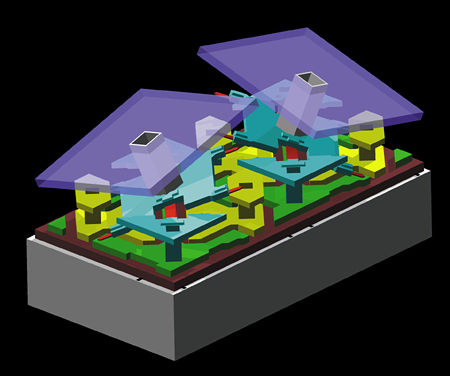
DMD mirrors (two shown). Responding to the signal source, each rotating mirror/pixel directs the light from the projection bulb either into the lens or away from it to be absorbed within the case. As the number of times each mirror flashes per second varies, our vision sees the result as levels of gray. Illustration courtesy of Texas Instruments.
The Gamut
There you have it—the gamut of fixed-pixel imaging technologies currently in use for front- and rear-projection TVs. (I haven't covered plasma display panels, which, along with newer AM LCD and organic LED technologies, are topics best left for another time.) Right now, the strongest players are polysilicon LCD and DLP, with LCoS still trying to get a foothold in the market.
Some analysts believe that LCoS is a few years away from making a real breakthrough. But plenty of companies are trying to make it work now, including Sanyo, Hitachi, JVC, Three-Five, and some new Chinese startups. Unlike DLP, LCoS displays can be made in many flavors and in much higher resolutions than LCDs for a given panel size. Look for LCoS to eventually mature into a viable competitor and major player in the consumer big-screen TV marketplace—if plasma and organic LED imaging don't beat it to the punch.
- Log in or register to post comments


